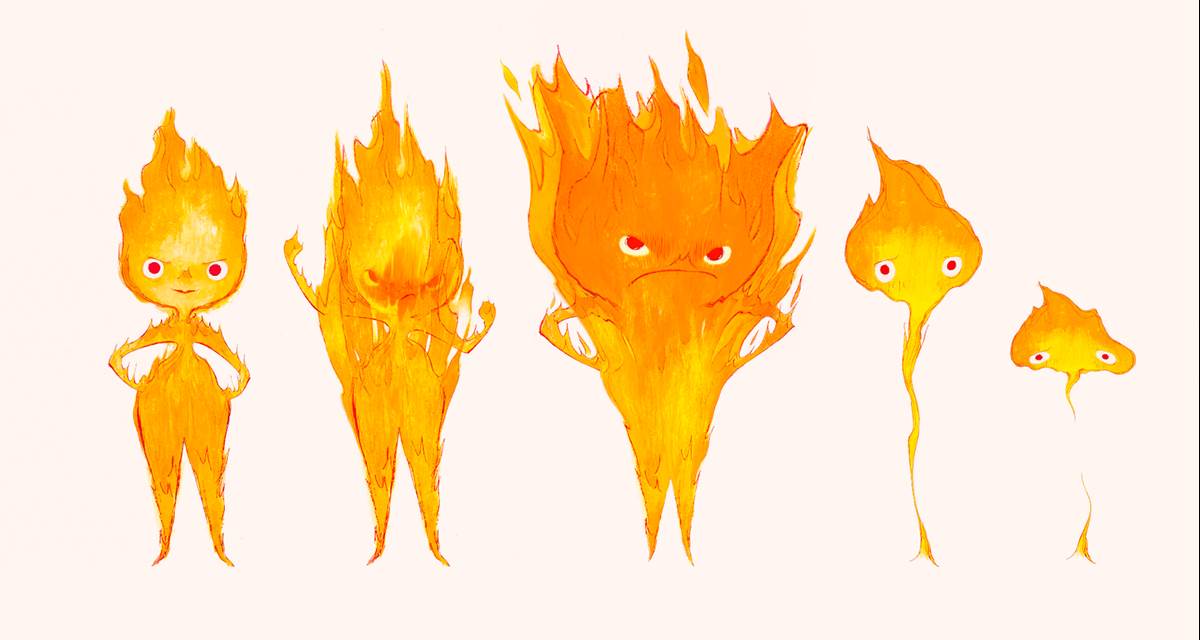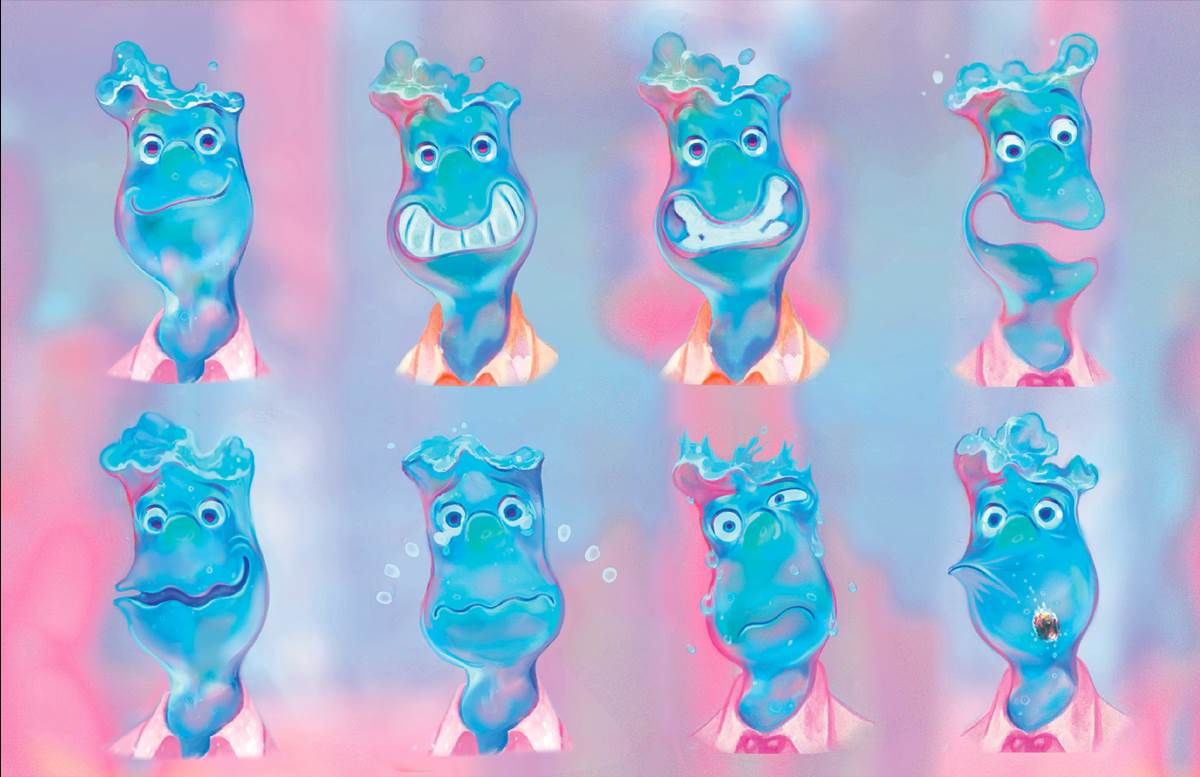When you sit down in a movie theater to watch Elemental on June 16th, you likely won’t be thinking about all of the technical hurdles that had to be cleared in order to bring this love story to life. That’s because the story should sweep you off your feet faster than Element City’s Wetro Train, not leaving you with enough time to stop and ask the question “how did they do that?” But during an early press preview at Pixar Animation Studios in Emeryville on March 27th, it became clear that for the medium of animation, Elemental marks another turning point. In other words, Peter Sohn’s latest film is a game changer.
First up, some news. When Elemental launches in theaters on June 16th, it will include an animated short, a Pixar tradition that dates back to a bug’s life in 1998. That film was preceded by the short Gerri’s Game, with the titular character voiced by Pixar’s own Bob Peterson, who also voiced Roz in Monsters, Inc., Mr. Ray in Finding Nemo, and Dug in Up. The role of Dug has continued for Bob Peterson through the Disney+ short series Dug Days, with the final installment now attached to Elemental for a theatrical release. “Carl’s Date” will premiere on the big screen before joining the other five shorts on the streaming service. And we also got a bit of voice cast news, with Catherine O’Hara announced as the voice of Wade’s mother Brooke.
Elemental is a literal opposites attract story about Ember, a girl made of fire, who falls in love with Wade, a boy made of water. While the characters exhibit uniquely human characteristics, Peter Sohn’s edict to the team was that the “Characters are not human.” He wanted Ember to appear made of fire, not like a girl on fire. So visual effects supervisor Sanjay Bakshi got to work, leading a team through lots of trial and error to get the look right. Since the character is a living flame and therefore doesn’t have a skull, the team quickly learned that Ember’s eyes would need to be able float around as her mood and expressions change. And since flames have the ability to grow and shrink, she, too, would need the levels of squash and stretch typically reserved for the hand-drawn medium. In other words, Ember was going to require a whole new way to animate computer-generated characters.
Enter character supervisor of modeling and rigging Jeremy Talbot, who showcased how malleable the character rigs on Elemental had to be. In the case of Ember, her limbs needed the ability to stretch in such a way that parts of her flame would disappear and reappear with her motions. In computer animation, fire is typically a visual effect that is handled after an animator passes the scene off, but on Elemental, the animators needed to be able to control the direction of the flames, the intensity and brightness, and the color, all of which change with Ember’s mood. Two of the three directing animators on the film, Gwendelyn Enderoglu and Allison Rutland, shared that the animators have over 10,000 individual controls on Ember and Wade. Even bits of Ember left behind, like little flames that fade out when she walks over a wooden surface, were given to the animators to control rather than being added in by visual effects after the shot was approved to proceed through the pipeline.
Speaking of the pipeline, because of the visual effects needs of the main characters in Elemental, Pixar had to rework the usual flow for this film. Character effects supervisor Stephen Marshall revealed that some effects work had to be done in advance, like working with the shading and rigging artists to help keep the characters on model as they are animated. In the same way that Mickey Mouse’s two ears should be visible no matter which direction he is facing, Ember’s head always has three points that create her equivalent of a hairdo. But in terms of what animation insiders and fans typically think of as visual effects, character supervisor of shading and grooming Junyi Ling showcased all of the layers that get added to Ember after the animation reaches his team. This included the development of a Neural Style Transfer (NST) that could be created to make tweaks to the volumetric layers, density field, temperature, velocity, and the illumination of this fiery character.
Director Peter Sohn and producer Denise Ream both went into the project expecting Ember to be the most difficult character to create and yet Wade brought along similarly complex challenges along with different ones. As a transparent character made of water, when turned around, the computer naturally showed the backs of his teeth and eyeballs, both of which had to be magically erased in the code when seen from any angle beneath the surface of the character. It was easy for a character made of water to look like a glass vessel, so giving the animators tools to allow his exterior to ripple with his motions brought another unique challenge. And the character needed the ability to not only change his shape but also lose it entirely, becoming a literal puddle of water.
If you’re a longtime animation fan, a lot of the things Ember and Wade can do in Elemental sound plausibly impossible in 2D animation. Think Genie in Aladdin, with his ability to transform into anything or grow and shrink at will. But if you think hard, you’ll realize that in computer animation, this is simply not done. While recent projects like Luca and Turning Red brought new rigging advancements that allowed animators to control the speed of a transformation, such as human to sea monster, never before has a CG-rigged character seemed so hand manipulated as Ember and Wade in Elemental. So while the story is sure to set your heart ablaze with emotions on June 16th, when the story is done flowing through you, pause to consider the marvelous technological advancements of Pixar’s animation software Presto and the hard work that made all this possible.



